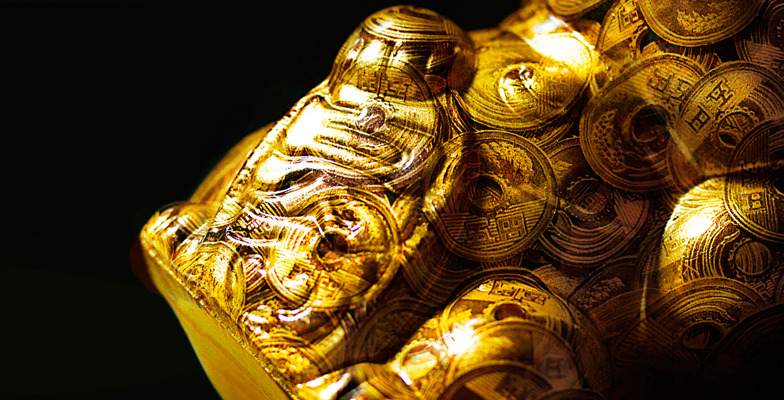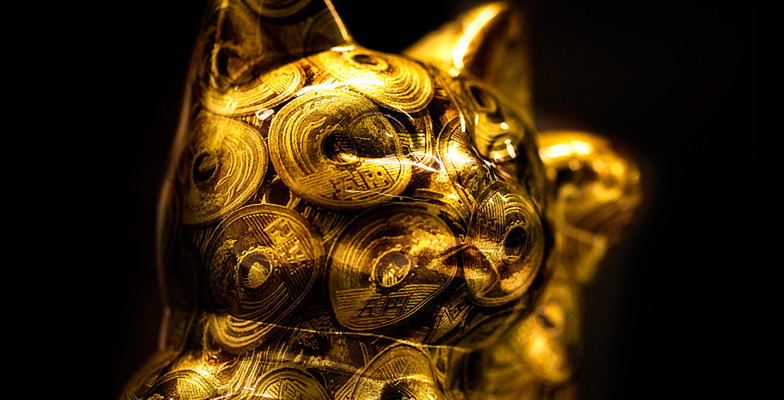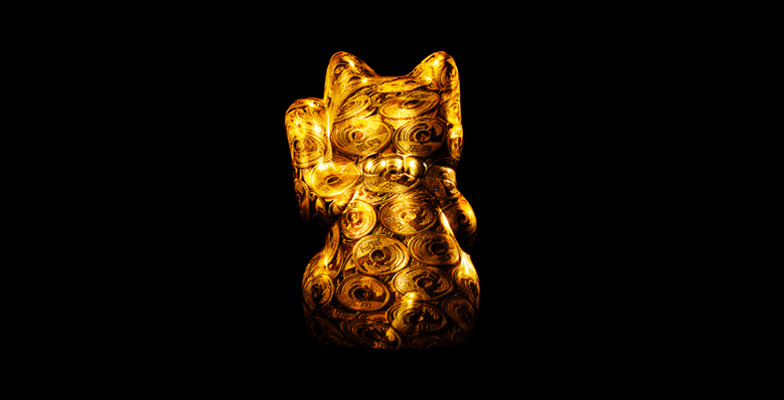"Good JAPAN Innovation" is a project where outstanding Japanese craftsmanship and Dentsu Inc. art directors collaborate under the theme "Traditional Crafts × Design" to create works and communicate new value to the world. The eighth installment features a collaboration between Aichi Prefecture's maneki-neko (beckoning cat) and the special printing technique "hydrographic printing."
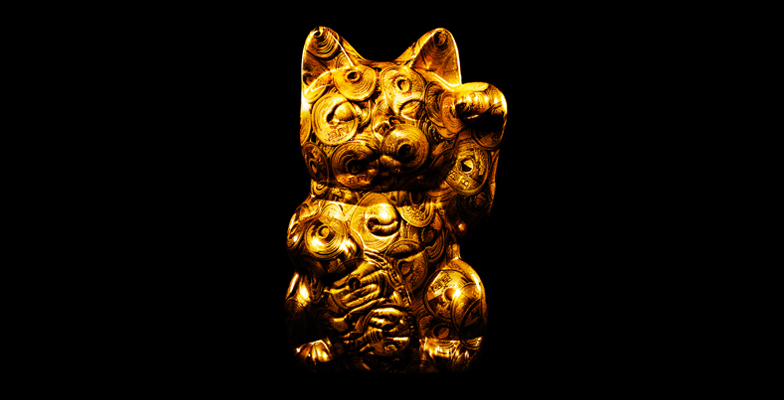
The completed Maneki-neko
The beckoning cat has long been cherished as a lucky charm. It is said that a cat raising its left paw signifies "inviting people."
Then,
If it adorns itself with Goen (five yen),
wouldn't it become a cat that invites encounters of good fortune?
?
This project embodies that very idea.
I, Matsunaga, was in charge of this project, which was realized through a collaboration between Yamatané, a long-established Tokoname ware wholesaler in Tokoname City, Aichi Prefecture, and BIG ONES, who possess high-quality hydrographic printing technology.
In search of the beckoning cat.
Tokoname City in Aichi Prefecture is a town that has prospered thanks to Tokoname ware, one of Japan's Six Ancient Kilns, and is a major production center for maneki-neko. In search of the beckoning cat, I visited Mr. Yoshitaka Ina, the representative of Yamatan.
Tokoname-yaki maneki-neko cats boast an 80% share of production volume. While various regions across Japan have their own distinctive maneki-neko traditions, Tokoname, as a ceramics production center, gained nationwide fame shortly after the war by successfully mass-producing the two-headed design maneki-neko.
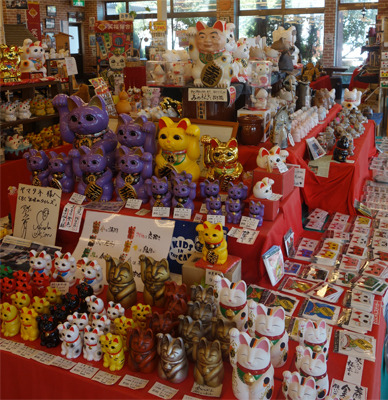
The shop floor is lined with rows upon rows of maneki-neko.
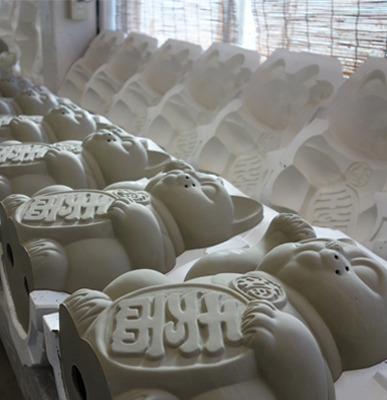
The manufacturing process. After shaping the clay in the mold, it is fired.
Wishing cats are popular figurines symbolizing blessings for good fortune, prosperous business, abundant customers, and household safety. Those raising their left paw are said to "invite customers," while golden ones are believed to attract financial luck.
Overseas, they are popular as lucky mascots under the nickname "Lucky Cat" and are exported in large numbers.
The painting of Tokoname-yaki beckoning cats is done after firing. This makes them suitable for adding illustrations later.
This time, I chose a plain white beckoning cat to incorporate a photo of a floor covered in five-yen coins as the design.
I wanted to adorn it beautifully with Go-en.
I got the pure white cat.
But how to beautifully and cleanly map the five-yen coin design... That's when I encountered hydrographic printing.
Water transfer printing is a technique that uses water pressure to transfer a design printed on a special film onto the surface of a material. It enables the expression of designs on curved or uneven surfaces, which was difficult with conventional techniques.

Pure White Maneki-neko

We neatly arrange five-yen coins for photography to create the material for the special film.
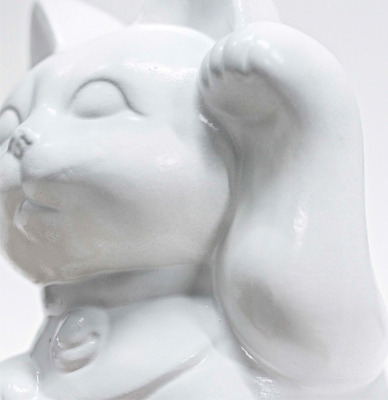
Numerous curved surfaces and complex

The protrusions and indentations of the oblong section are also complex
This technique is ideal for maneki-neko statues with numerous protrusions and curved surfaces.
But would it work...?
Knowing it was a long shot, I rushed over to Mr. Toshiaki Matsui, the representative of BIG ONES.

Mr. Matsui contemplating how to achieve a better transfer
When I approached Mr. Matsui, who has extensive experience with water transfer printing technology, he kindly agreed to help.
Although this was his first time transferring onto a beckoning cat, he offered various suggestions and went through trial and error with us—such as applying a gold metallic base coat first and methods to minimize visible seams when transferring around the entire 360-degree surface.
Watch the video to see the water transfer process.
Making Movie ※No audio
Through the cooperation and skills of many people, the "Cat that Invites Encounters of Good Fortune" was realized. May you all experience encounters of good fortune!
Planning Cooperation: Yoshitaka Ina (YAMATANE), Toshiaki Matsui (BIG ONES)
Still Photography: Takahiro Maruo (Tribus)
Production Support: Masayuki Hirata, Ryo Nishihara, Kota Yamakawa (Osaka Advertising Research Institute), Taira Ishikawa (Dentsu Inc. Kansai Branch)











